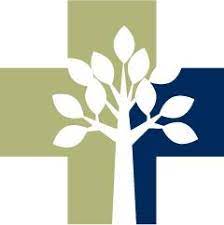
F.W. Huston is a 25 bed Critical Access Hospital in Winchester, in Northeast Kansas and is a member hospital in the Compass HQIC Network. When Nancy Martin, a former employee of F.W. Huston Medical Center, returned to the hospital as Director of Nursing in August of 2022, she noticed some trends in care transitions that were attributed to an increase in readmissions. Patients were returning to F.W. Huston or other hospitals after hospital discharge in cases where it seemed preventable. Nancy and the F.W. Huston Team would embark on a quality improvement project that after nearly one year has made strides in process improvements, yet admittedly is still under construction.
Early in her care transitions project, Nancy met with Erin McGuire, Quality Improvement Advisor with the Kansas Healthcare Collaborative. Erin shared Compass HQIC resources related to Care Transitions including educational webinars in the iCompass Academy, which Nancy found particularly helpful as they shaped their care transitions program.
 Nancy MartinNancy’s initial observations when assessing the care transitions at the hospital were that the referral process overall was decent but there were some pain points. Patient intake paperwork was overwhelming, and all paper based. The discharge process needed improvement; the bulk of the planning occurred in the last 2-3 days of the inpatient stay, and it seemed that process should start much earlier in the stay.
Nancy MartinNancy’s initial observations when assessing the care transitions at the hospital were that the referral process overall was decent but there were some pain points. Patient intake paperwork was overwhelming, and all paper based. The discharge process needed improvement; the bulk of the planning occurred in the last 2-3 days of the inpatient stay, and it seemed that process should start much earlier in the stay.
Nancy started the process improvement work by gathering a team of care transition stakeholders including the hospital CEO - Heidi Pickerell, hospital COO - Melody Keirns, Director of Ancillary Services Traci Noll, Social Worker - Mary Hoffman, Therapy Director - Andrew Kuhn, and Clinic Nurse - Marvel Green. They looked at processes involved in care transitions starting with referral, admission, readmission risk assessment, referral to community resources, discharge planning, goal setting, dismissal, and discharge follow-up.
As they reviewed the admissions process, they reviewed the screening tools in their EHR, Athena and implemented the modified LACE tool for assessment of risk of readmission. Staff were trained in how to utilize the risk tool and what steps to take for high-risk patients. Nancy says that it was important that staff understood the tools and the “why” behind the tools.
In response to the need to plan earlier for discharge, nurses and therapists began to meet early in the inpatient stay to start the planning process. Nancy reports that F. W. Huston has group meetings where the nursing team and therapy team share observations early in the admission to plan for the discharge. The nurses share patients’ clinical progress and patient and family goals for their return home. The therapy team shares their observations on what they are seeing physically in the patient’s therapy sessions. Sometimes there is a divide between the patient or family’s goals for return to home or activity and what the therapy team is seeing in the therapy sessions. Knowing the patient’s goals early on allows for adjustments in therapy or adjustments in the patient’s expectations. At other times, the therapy team can work with the family and train the caregivers on transfers to bed, bath and toilet or other activities of daily living that will be a necessity when returning home. The team’s goal is a safer, successful discharge.
During the improvement process, as they identified patients who were discharged and readmitted and, in some cases, had repeat readmissions, they worked to identify ways to prevent repeat readmissions. In one case, they discussed the idea of a home visit to assess issues that might be contributing to the readmission risk. This discussion evolved into a program where the hospital works with families to complete a home assessment one week prior to the estimated discharge for patients who are at risk of readmission or who have a history of readmissions. If the patient and family agree to the assessment, the hospital team assesses risks in the home that can contribute to health risks such as environmental issues and fall risks. The team can also identify barriers to mobility that may need to be addressed prior to discharge such as the need for ramps, commodes, shower bars or other aids for activities of daily living.
Patients are sent home with a folder that includes the discharge instructions, follow-up appointment information with their Primary Care Provider and a list of Community Resources to help address social issues such as transportation, food insecurity, housing, domestic or elder abuse, medical assistance, or other basic needs. Hospital staff contacts the patient 48-72 hours after the discharge to follow-up and determine if additional resources or follow-up care is needed and to confirm understanding of discharge instructions.
The care transitions project is young, but Nancy reports they are seeing improvements. “Right now, we are homing in on the individual,” she says.
With a small population, it takes time to see reliable, meaningful data. They have seen the program impact individual patients and are seeing a decrease in readmissions they hope will continue throughout the year in their data.
Nancy and the F.W. Huston team continue to work on readmissions. The work is never officially finished. Nancy says, “We're still a work in progress to be sure, but we are making improvements!”
Recently, the F.W. Huston hospital team began working with EMS in their community to implement the Vial of Life program. Once implemented, patients will apply a decal to their front door that communicates to EMS to look for a Vial of Life bag on the refrigerator. The Clear Vial of Life Bag which also includes the Vial of Life decal includes a one-page document of vital information about the patient such as DPOA, Emergency Contact, Medication List, Active Diagnoses, and other vital information. Nancy expects this program to complement the work they have done over the past year with readmissions and will bridge the information gap between hospitals and primary care, families, and EMS.
To learn more about F.W. Huston Medical Center, visit their website at https://fwhuston.com/
